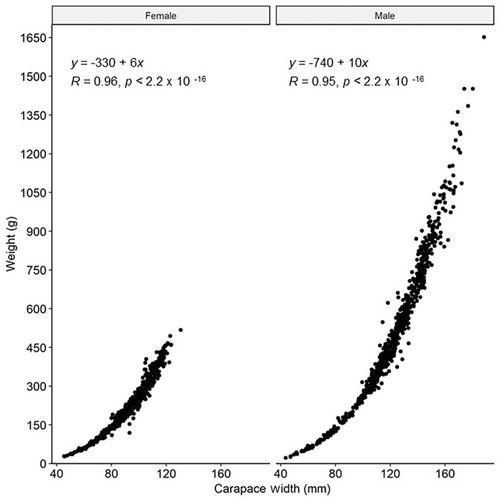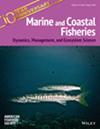Size at maturity, reproductive cycle, and fecundity of the southern California brown box crab Lopholithodes foraminatus and implications for developing a new targeted fishery
Abstract
Objective
The brown box crab Lopholithodes foraminatus is a member of the king and stone crab family (Lithodidae) that occurs in deepwater along the eastern Pacific coast. Historically, landings in California have been low for this species, but an increase in fishing pressure prompted the state to designate it as an emerging fishery and implement an experimental fishery program. With no known biological studies of California brown box crab, essential fisheries information is needed to evaluate the feasibility of a new targeted fishery.
Methods
Using field sampling and observations, along with laboratory studies, we investigated elements of reproductive capacity of the brown box crab in southern California.
Result
We found that females reach physiological maturity at a carapace width (CW) between 50.8 and 71.7 mm, and males do so at a CW between 43.3 and 66.3 mm. Morphometric maturity analysis showed a clear inflection point of abdomen width between immature and mature females. Females were 50% functionally mature at 75 mm CW. Morphometric and functional maturity was not detected for males, albeit samples of small male crabs were extremely limited, thus warranting further study. Females followed a biennial reproduction pattern: mating occurred in the fall, followed by an approximately 18-month brooding period, with hatching in the second spring after mating. Fecundity was positively related to size and ranged from 8352 eggs/brood for a 67.8-mm-CW female to 62,181 eggs/brood for a 130.5-mm-CW female.
Conclusion
These findings can inform the evaluation of a fishery for the brown box crab, including potential management strategies and models for assessing stock condition.


 求助内容:
求助内容: 应助结果提醒方式:
应助结果提醒方式:


